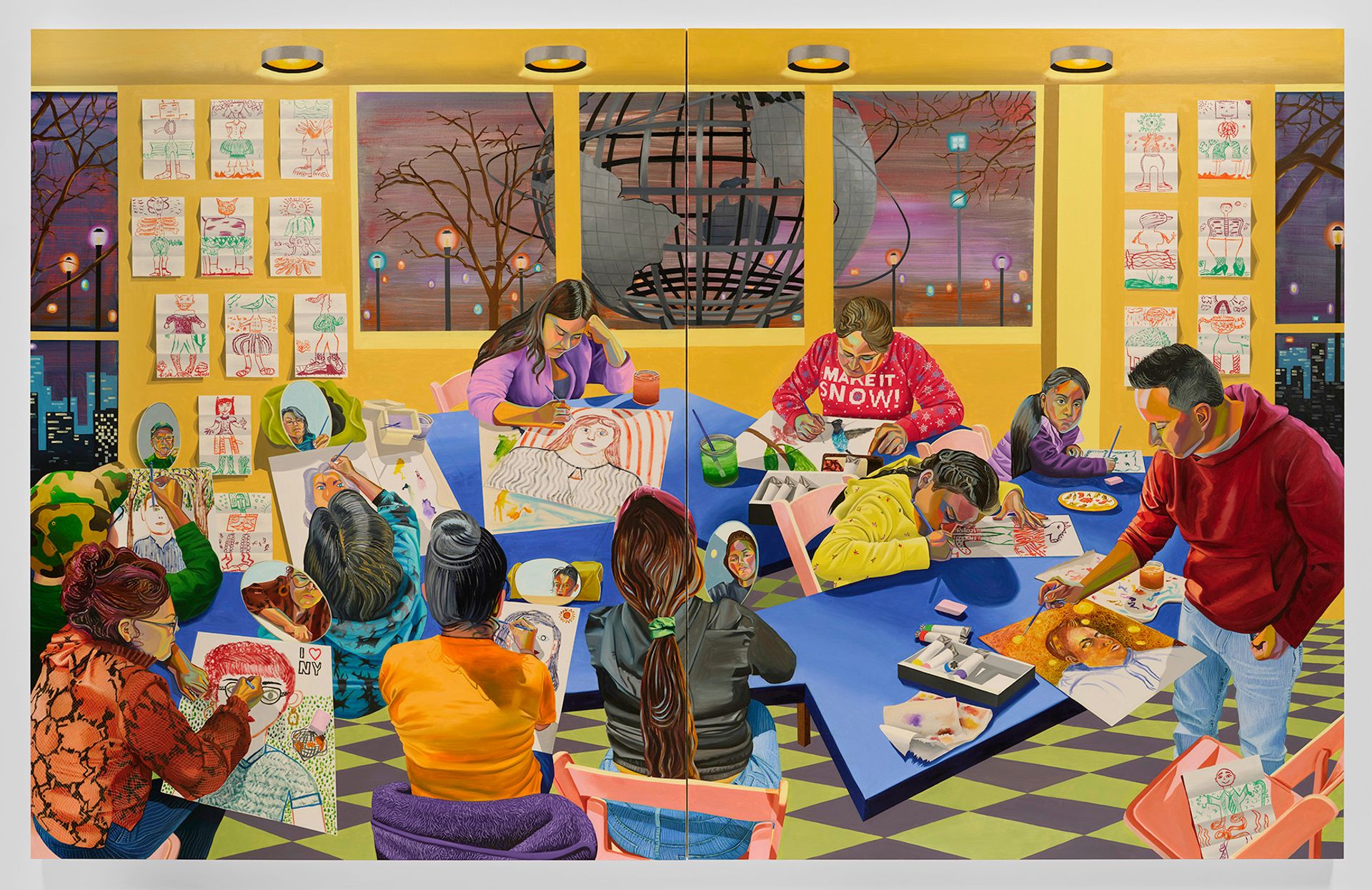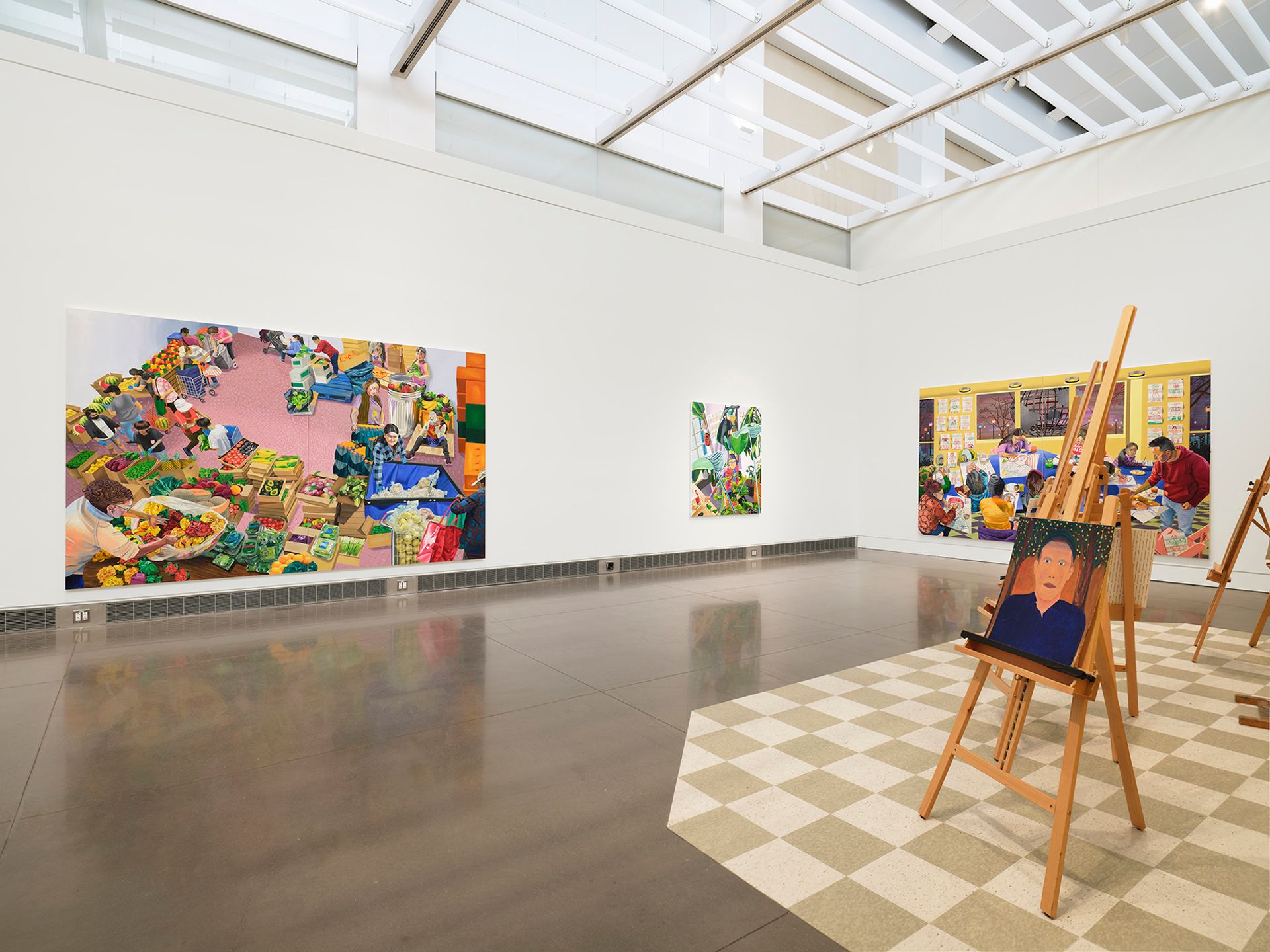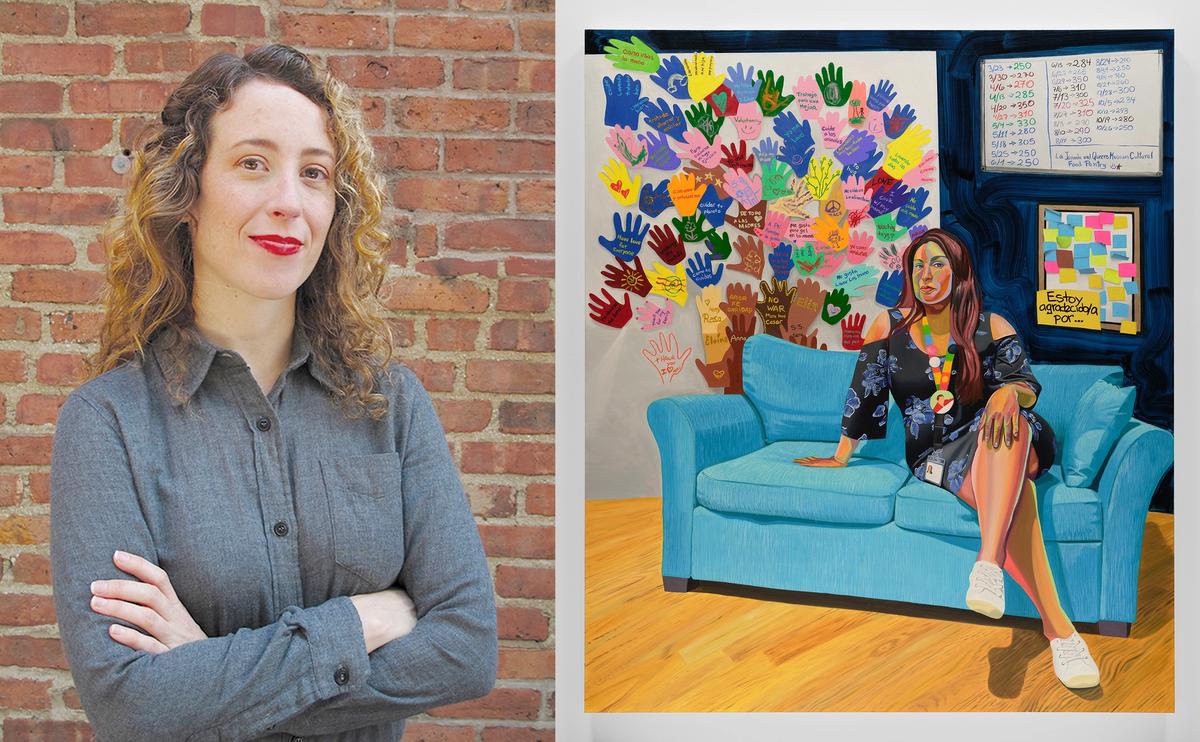Mexico City-born Aliza Nisenbaum is an artist for the people. Her bright paintings chronicle their subjects’ everyday intimacies, reimagining large-scale portraiture not as a rarified commodity for the rich and powerful, but as a tool for preserving memory. Heavily influenced by the work of the Mexican muralist Diego Rivera, Nisenbaum portrays Central American immigrants, essential workers and members of the extended Corona, Queens, community with whom she has volunteered and taught since her involvement with the Queens Museum and Creative Time’s Immigrant Movement International initiative in 2012. Now, she teaches a Spanish-English bilingual painting workshop to leaders of the La Jornada and Queens Museum Cultural Food Pantry, whose student work hangs alongside her solo exhibition at the museum, Queens, Lindo y Querido (“Queens, beautiful and beloved”). The show coincides with a commission by the Queens Museum and Delta Air Lines for a new terminal at LaGuardia Airport; the resulting mosaic will be installed there next year.

Aliza Nisenbaum's El Taller, Queens Museum (2023) © Aliza Nisenbaum; courtesy of the artist and Anton Kern Gallery, New York; Photographer: Thomas Barratt
The Art Newspaper: What was your process for the LaGuardia commission?
Aliza Nisenbaum: It’s called The Ones Who Make It Run. I chose 16 people who could represent all the labour it takes to make an airport run. Two of them were pilots—we looked all around to find a female pilot and an African American pilot—and then all of these different people who are, as they’re called in the airport, below-wing and above-wing workers, like David, who was a firefighter on 11 September 2001 and is now in charge of putting out fires at both JFK Airport and LaGuardia. Like with all of my compositions, none of [the sitters] were in the same space at the same time, but I arranged many Zoom conversations with all of them to get a sense of their character and their personality, what they would be wearing, what kind of accoutrements they’d be holding.
How does the time you’ve spent teaching and your investment in the Corona community inform your paintings?
I get to know people over a really extensive period of time. The background scenes are a fleshing out of people’s personalities, but also the networks that I see in terms of their relationships. I also paint their material culture. This one family I’ve been painting over the past ten years, I’ve been chronicling my relationship with them for so long. I visit their houses and I get to know the things and the crafts that they live with, which point to their history. The compositions and the surrounding of the painting—the formal elements—are an outcome of time spent with people over a really long period.

An installation view of the exhibition Aliza Nisenbaum: Queens, Lindo y Querido at Queens Museum, New York Photo: Thomas Barratt; courtesy of Queens Museum
Do you see the paintings as collaborative?
Yes, definitely. It’s a little bit intuitive. With the airport commission, there’s three different flight attendants in front. I got to know their characters and what poses were more suited to each one of their personalities and friendships. I went to their houses quite a few times and they chose the clothes that they would be wearing, so not only are they collaborative in terms of the choices we make for how to stage a particular composition, but also in terms of the energy that I get from people.
The way that you use colour is so extraordinary; the paintings really glow. Are you doing a wash of one colour and painting into that, or using neon underpainting?
It’s funny because there’s so much narrative and storytelling in my work, but colour is the thing that gets me most excited. It’s what makes people want to dive into these stories when there’s an aesthetic element that kind of hits you on a guttural level. No, I don’t put down a wash of colour because, like Alex Katz, I’m really particular about the kind of surface I paint on. It’s very important to have that bright white base so that every distinct colour that I use can be as dynamic as possible. I do “passage painting”, where there’s colours right next to each other and some areas might remain blank for a really long time. Sometimes it’s hard to see the big picture because I start locally and then I jump around, but it comes together at the end. I like the white of the canvas to be almost like a light source for each colour. For each little part, I’ll have like an enormous glass palette with literally 40 colours mixed with something. If you zoom in on any one of my faces, there’ll be an insane amount of colours. It’s pretty laborious, but it keeps my interest.
• Aliza Nisenbaum: Queens, Lindo y Querido, until 10 September, Queens Museum


